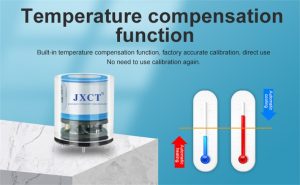-
Advancing Air Quality Monitoring: The Role of Gas Sensors in Environmental Health
- Air pollution is a global concern affecting the health and well-being of millions of people worldwide. To address this issue, accurate and real-time monitoring of air quality is essential. Gas sensors play a critical role in monitoring an……
- Chat Online
-
Description
Air pollution is a global concern affecting the health and well-being of millions of people worldwide. To address this issue, accurate and real-time monitoring of air quality is essential. Gas sensors play a critical role in monitoring and assessing air pollution levels, helping us understand the impact on both human health and the environment. In this article, we will explore the advancements in air quality monitoring and the pivotal role gas sensors play in promoting environmental health.

Understanding Gas Sensors
Gas sensors are electronic devices that detect and measure various gases present in the atmosphere. These sensors rely on advanced technologies to identify and quantify specific types of pollutants, such as nitrogen dioxide (NO2), ozone (O3), carbon monoxide (CO), sulfur dioxide (SO2), volatile organic compounds (VOCs), and particulate matter (PM). They work by detecting changes in electrical conductivity, optical properties, or chemical reactions when exposed to targeted gases.
Real-time Monitoring of Air Pollution
One of the primary roles of gas sensors is to enable real-time monitoring of air pollution. Traditional air quality monitoring methods often involve collecting samples for laboratory analysis, which can be time-consuming and may not provide immediate results. Gas sensors, on the other hand, provide instant data on pollutant concentrations, allowing for timely interventions and public awareness.
For example, nitrogen dioxide sensors deployed in urban areas can detect high levels of NO2 emitted by vehicles and industrial activities. This information allows authorities to implement measures such as traffic restrictions or emission control policies to reduce pollution levels promptly.
Indoor Air Quality Monitoring
Gas sensors also play a crucial role in monitoring indoor air quality, which is essential for creating healthy living and working environments. Indoor pollutants, including volatile organic compounds from cleaning products, formaldehyde from furniture, and carbon monoxide from faulty appliances, can significantly impact human health.
By installing gas sensors in buildings, schools, and homes, occupants can be alerted to potential harmful gases and take appropriate actions. Additionally, gas sensors can help identify the sources of indoor air pollution, enabling corrective measures to eliminate or mitigate the pollutants.
Health Impact Assessment
Gas sensors contribute to health impact assessments by providing accurate data on pollutant levels and their effects on human health. High concentrations of pollutants, such as fine particulate matter (PM2.5) or ozone, can cause respiratory problems, cardiovascular diseases, and even premature death.
By integrating gas sensor data with health records, researchers and public health officials can analyze the correlation between air quality and health outcomes. This information helps inform policies and interventions aimed at reducing exposure to harmful pollutants and protecting vulnerable populations.
Urban Planning and Environmental Management
Gas sensors are valuable tools in urban planning and environmental management. By mapping air pollution hotspots, city planners can make informed decisions regarding land use, transportation infrastructure, and green space allocation. Implementing gas sensors in strategic locations helps identify areas with poor air quality, which may require stricter regulations or targeted pollution control measures.
Furthermore, gas sensors aid in assessing the effectiveness of environmental initiatives and pollution control strategies. By continuously monitoring pollutant levels before and after implementing specific measures, policymakers can evaluate their impact and adjust strategies accordingly.

Promoting Citizen Science and Awareness
Advancements in gas sensor technology have led to the development of low-cost, portable sensors, encouraging citizen participation in air quality monitoring. Individuals and communities can now access and analyze air quality data using smartphone applications or online platforms.
This citizen science approach not only enhances public awareness about air pollution but also enables individuals to take action to protect their own health and advocate for policy changes. Gas sensors empower communities to engage in environmental monitoring and support evidence-based decision-making processes.
Conclusion
Advancing air quality monitoring is critical for safeguarding environmental health and improving overall well-being. Gas sensors have emerged as indispensable tools in this pursuit, enabling real-time monitoring, indoor air quality assessments, health impact evaluations, urban planning, and citizen engagement. As technology continues to evolve, the accuracy, affordability, and accessibility of gas sensors will further enhance our ability to address air pollution challenges effectively. By harnessing the power of gas sensors, we can work towards creating cleaner,
-
Recommend:
-
-
Gas detectors are crucial devices used in various industrie…
-
How do gas detectors ensure industrial safety?
Gas detectors play a crucial role in ensuring the safety of…
-
How Gas Sensors Help Combat Air Pollution?
Air pollution is a pressing global issue that poses signifi…
-
How can gas sensors be used in air quality monitoring?
Air pollution is a significant global concern that affects …
-
 : +86 155 8830 2704
: +86 155 8830 2704 : jxdziot@gmail.com
: jxdziot@gmail.com
